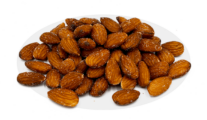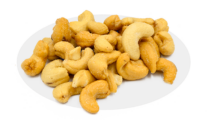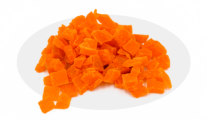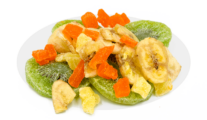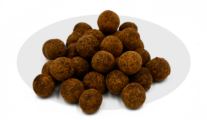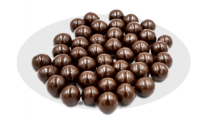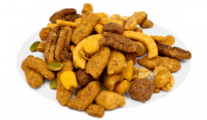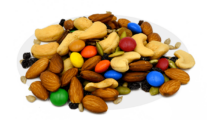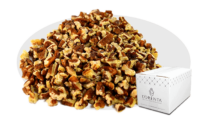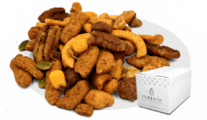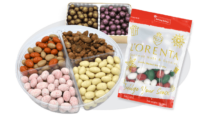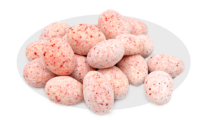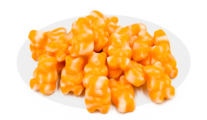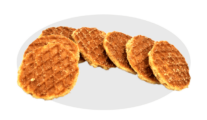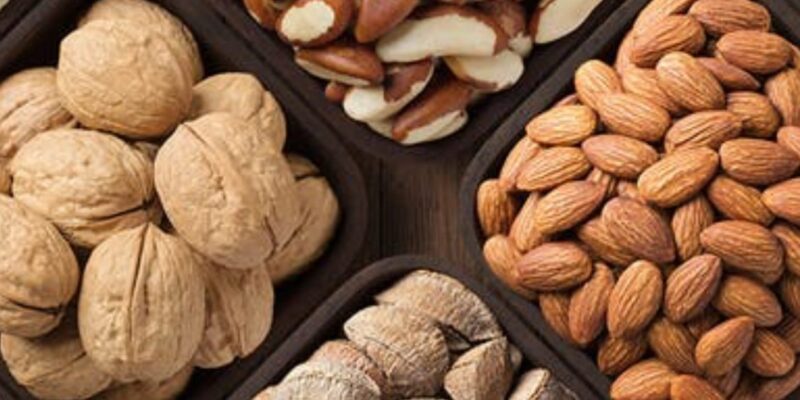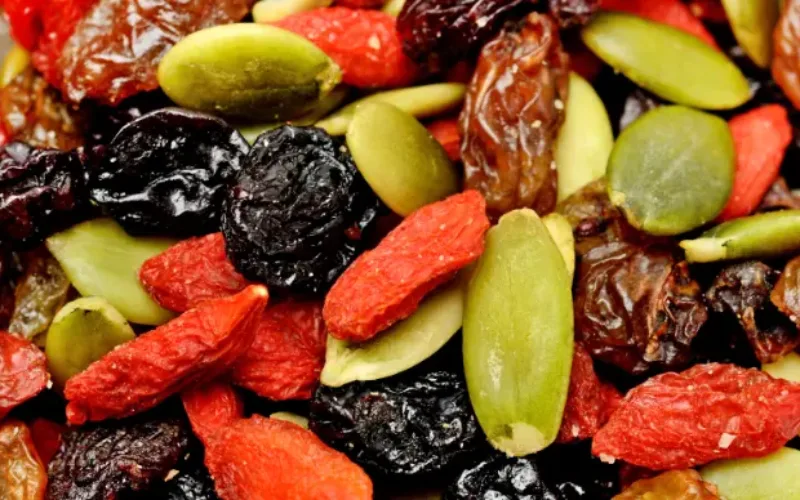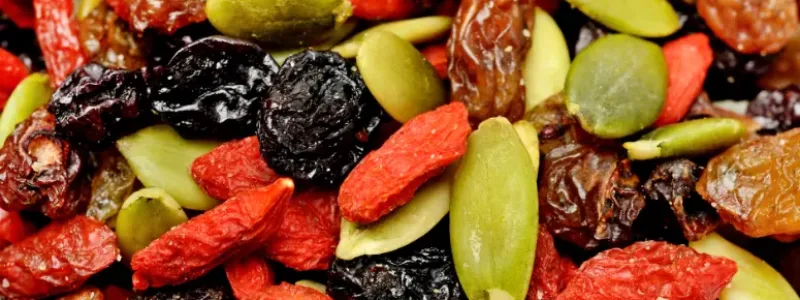Written By Sam Henselijn
Tree Nuts are one of the most popular snack foods. And they should be! They’re not only delicious but also good for your health. Most people know that tree nuts include a large variety of nuts. But what’s even a tree nut? And how are they different from other nuts? We think it’s time to set the record straight…. Learn more with this guide to tree nuts!
What are tree nuts?
Tree nuts are, simply put, the seeds of fruit-bearing trees. That means tree nuts – like almonds, walnuts, pecans, macadamia nuts etc – all grow on trees.
What sets them apart from other tree-growing fruits, like apricots and avocados, is the hard outer shell. Plus the fact that the meat inside is hard or leathery.
With tree nuts, what you eat is the seed itself. Think of other fruits: you can simply take a bite of a juicy apple or a plum peach – the skin is meant to be enjoyed. With tree nuts, the outer layer and skin are just way too hard.
Are almond nuts ?
Many popular foods that people consider nuts are really the seeds of drupes. Those are fruits whose flesh surrounds a single shell with a seed inside. That’s the case with almonds. Whatever the case may be, almonds are delicious eaten raw or simply salted and roasted. You can even find them sprinkled with different seasonings, such as chili powder, cinnamon or honey.
Are cashew nuts ?
Fun fact: Cashew nuts are drupe seeds, and not real nuts. They’re
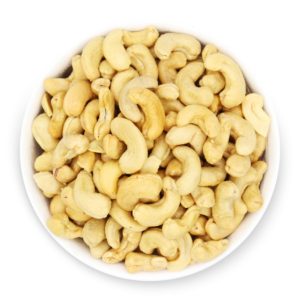
grown in many parts of the world but originate from Brazil. Cashews grow on fruit producing trees that produce a fruit known as the cashew apple. It slightly resembles a small bell pepper in tones that range from yellow to orange and red. At the base of the fruit is a hard shell shaped like a kidney bean. Inside, there’s a single seed: the cashew nut.
Cashews demand a lot of work and care. Between farming and harvesting, and the process of separating the nut from the fruit, there’s a whole lot that goes into it before we can consume them. Worth it? Absolutely!
Are pine nuts?
You may be familiar with pine nuts. They’re the little nuts often used to make pesto. Also called pignoli, they’re the edible seeds of pine trees. What we eat is the edible part of a hard, inedible nut casing.
There are about 20 species of pine trees that produce pine seeds considered large enough to harvest. Most commonly, the seeds we find in supermarkets come from four particular pine tree varieties: the Mexican pinon (Pinus cembroides), the Colorado pinion (P. edulis), the Italian stone pine (P. pinea), and the Chinese nut pine (P. koraiensis).
It takes between 15 to 25 years for the trees to begin producing the seeds and even longer for them to reach top production. In North America, the majority of the harvest comes from wild trees. Usually the seeds need to be harvested by hand – another factor that contributes to their steep price tag.
Are Brazil Nuts Tree Nuts?
Brazil nuts do grow on trees, except they’re not really nuts. They’re
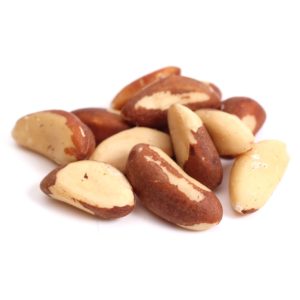
seeds from the fruits of one of the largest and longest-living organisms in the Amazon. This majestic tree is called the Brazil nut tree or Bertholletia Excelsa. It is the only internationally traded nut that comes from the wild, so it’s very special.
The nuts are particularly well known in the Brazilian state of Pará. In fact, they’re known as castanha-do-pará (Pará nut) in the country. These surprisingly large nuts are commonly eaten raw or blanched. They’re considered a superfood with multiple health benefits. Brazil nuts are high in protein, fiber, thiamin, selenium, copper and magnesium.
What about coconuts?
There’s no straightforward answer to that question. Technically, a coconut is a fibrous one-seeded drupe or dry drupe. Nonetheless, you’ll also see them classified as a fruit, a nut, and a seed.
Even though it’s called a coco-nut, nuts can be defined as a one-seeded fruit. By this loose definition, a coconut can also be a nut. However, a true nut is indehiscent. That means they do not open at maturity to release its seeds. The seeds are naturally released when the fruit wall disintegrates or are digested by an animal.
Understanding that a seed is the reproductive unit of a flowering plant, some scientists prefer to refer to coconuts as a water dispersal fruit and seed. See where all the confusion comes from?
What nuts are not tree nuts?
Tree nuts include almonds, cashews, hazelnuts, pine nuts, pistachios, and walnuts. But not all nuts are actual tree nuts.
Peanuts, for example, are considered legumes, not nuts. They’re in the same plant family as other beans like soybeans and lima beans.
Whatever their scientific definition may be, the fact remains that peanuts are some of the most popular nuts worldwide. There are a million ways to enjoy salted roasted peanuts! And yes, we will continue to call them nuts. They’ve earned that honor… We hope you have learned something new by reading this guide to tree nuts!
Sam Henselijn Author’s Biography – Meet L’Orenta Nuts CEO
Copyright 2024 L’Orenta Nuts
L’Orenta Nuts proudly holds the SQF food safety certification, symbolizing our unwavering dedication to upholding the highest standards of food safety and quality. This certification guarantees that our products undergo rigorous scrutiny, ensuring transparency, traceability, and adherence to global food safety regulations for the utmost consumer confidence.
L’Orenta Nuts has the HACCP (Hazard Analysis and Critical Control Points) certification is a systematic approach to identifying, evaluating, and controlling food safety hazards. It ensures that food products are produced and handled in a manner that minimizes risks and complies with safety standards.
Our GMP (Good Manufacturing Practices) certification ensures that a manufacturing facility adheres to comprehensive quality and safety standards while producing pharmaceuticals, food, and other consumer goods, promoting consistency, quality, and compliance with regulatory requirements.
L’Orenta is an FDA-approved manufacturing facility and has met the rigorous standards set by the U.S. Food and Drug Administration. It demonstrates compliance with regulations, ensuring the production of safe and high-quality food products.


